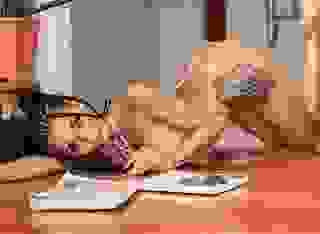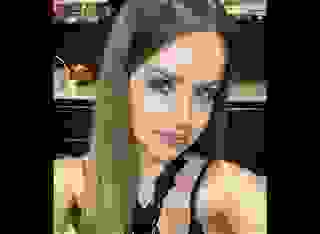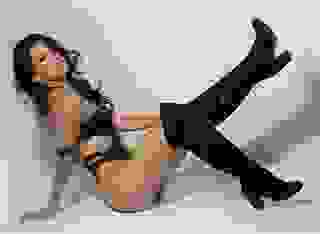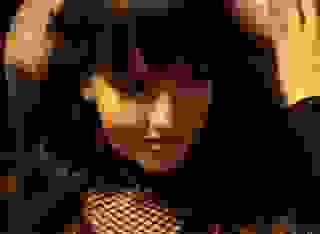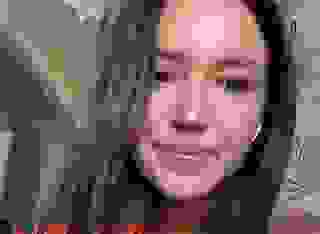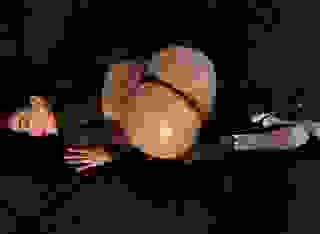Note: You can change font size, font face, and turn on dark mode by clicking the "A" icon tab in the Story Info Box.
You can temporarily switch back to a Classic Literotica® experience during our ongoing public Beta testing. Please consider leaving feedback on issues you experience or suggest improvements.
Click hereFor a girl so academically gifted, twelve-year-old Hana was rather naive. Being five years younger than her classmates, she missed out on sex-education lessons, so when she learned what an Entertainer did, she was repulsed. Not for moral reasons but because human biology was so yucky. There was a temporary estrangement between honorary niece and honorary aunt, until Hestia had a good long chat to Hana, woman to almost-woman, and cleared things up properly.
Mary would have liked to give her oldest daughter 'the talk' (in a cut-down, just-starting-puberty version) but she had her hands full with her other three daughters, who were all bright and restive. Besides this, she had a full-time teaching job and performed all the communal activities that an active and slightly bossy woman would naturally take on. She had a husband she adored but, however much Arthur supported her, helping Mary campaign for a seat on the governing council, he had an important job himself and needed her support as much as she needed his.
The result was that Hana spent as much time with Hestia as with her parents, so the love between the honorary aunt and her favourite niece, which (despite the recent dip) was always strong grew in depth.
After giving up her ambition to be an Entertainer (and never speaking of it ever again), Hana reverted to her first plan for a career. She would be an astronaut; but not just any astronaut. She would be an astronaut and an astrophysicist; an adventurer and a scientist. While she was discovering new planets, she would make discoveries in physics, studying problems that still eluded the greatest cosmologists.
3 Precession
When Morty was thirteen, Hana was twelve-and-a-half. The day after his birthday party, they snuck into the basement under the Star View Promenade to check how far the stars of their eighteen constellations had moved since their births.
Hana invented a device to make the observations easy. She printed up transparent pairs of plastic discs, one for each of their constellations. One disc fitted over a porthole. It had dots that matched up with the stars of the constellation etched onto the thick plastiglass windows. The second disc was hinged to the first disc at an eccentric point, equal to the tilt of the space station. The circumference of the upper disc was marked with degrees in tenths of seconds.
The upper disc also had holes for the stars of a constellation. When it was rotated to line up with the stars in their current positions, the apparent distance the constellation had moved in the sky could be read from a pointer on the lower disc. Thus Hana could calculate how far the space station had travelled in its orbit.
Morty took the device for his Rabbit constellation to a window and tried to measure their change.
"The stars don't fit," he said.
"Show me."
"Look. The top plate only moves along this line ..."
"Yes, the ecliptic."
"... but the stars have moved down a bit as well."
"So they have, in an arc. That's interesting."
"Was your birthday star-chart wrong?"
"I don't think so."
"But constellations can't move can they?"
"Of course not. The stars of a constellation aren't connected to each other."
"So it must be the space station that's changed. Are we out of our orbit? Will we fall into Capella and get burned up?"
"You have the silliest imagination possible."
"I like to think exciting things."
"No, our orbit hasn't changed and we're a light-year from the Capella system. It would take ten-thousand years to fall into a star from here: plenty of time to rescue you and your rabbit."
"Phew!"
"This is precession."
"Press-what?"
"Precession. A kind of wobble. You know your gyroscope?"
"Fred."
"Pardon?"
"Fred, the gyroscope."
She stared at him.
"You didn't name your gyroscope. You just made that up. No one names a gyroscope."
"I did."
"You're an idiot," she said. "Anyway, when the gyroscope begins to slow down, it tips over a bit and the top of the gyroscope inscribes a circle."
"Fred does what?"
"If you put a laser pen on the top of the gyroscope to make a beam, the pen would write a circle on the ceiling."
"Oh, yes. I know that," he lied.
"That's precession. It's the wobble that makes the top of the gyroscope go in ever bigger circles until it falls down and tips over."
"Poor Fred. So is the space station precessioning?"
"Precessing. Yes. It's wobbling a tiny amount, enough to change the angle of its tilt, so the point at which the two discs are joined in my device is not fixed but moves about in a small circle."
"We should investigate it. The wobble might mean some horrible danger."
"Unlikely. Why do you like to think up disasters?"
"It's more fun than thinking ordinary things."
Hana understood that. In her case, with the whole cosmos as her mental playground, from the smallest sub-atomic particles to the greatest galactic clusters, her ordinary thoughts were far beyond most people's wildest dreams.
"We could be sensible," she said, "and report it to my dad or the governing council."
"That's boring. And wouldn't we need to confess about our storeroom and show them the etchings?"
"I suppose we would."
"Then let's find out for ourselves and only tell someone if there really will be a horrible catastrophe. I don't want to lose this place. It's ours. Besides, the punishment will be lots worse than gardening."
"I agree. Let's find out what's causing the precession."
4 Research
Now that Hana and Morty had a plan of action they needed to get out of the gardening punishment. That evening, Hana spoke to her parents about the project.
"Mummy, can I start a new physics project?"
Mary was Hana's teacher, though she was mostly a guide and supplier of advanced books for her daughter, who educated herself at the back of the classroom. So long as Hana did both her schoolwork and homework assignments (which took her barely fifteen minutes at the beginning of a lesson), she was left alone to study whatever interested her.
"What's it about?" Mary asked.
"The motion of the space station relative to the Capella system and the fixed stars."
"There's nothing new in that. You can look up the data in the library."
"I know, but I want to teach Morty about astronomy from first principles."
"Is Morty taking an interest in science?"
"Yes," Hana said, which was only half a lie.
"Good. He's a bright boy. He needs to apply his brain. I'm in favour. What do you say, Arthur?"
"Will it cause me any paperwork?"
"Of course not, Daddy," Hana said.
"Then I'm okay with it as well."
"Please, Daddy, can Morty and me have a break from gardening to do the research?"
"But you like gardening."
"I love gardening. I'll come back to it when the project's done."
Permission granted, Hana and Morty worked on the project in their gardening time, beginning in the library to study the engineering specifications and architectural plans for the space station, its mass, fuel-load, energy efficiency and propulsion system to keep the angular rotation within specified limits.
It took some time to get the information and put it in a usable form. When, three weeks later, they had collated enough data for Hana to perform some calculations (testing herself against the computer as always, just for fun), they met in their secret hideaway to work on their most ambitious mission yet.
While Hana projected tables of data and streams of calculations onto the wall from her computer tab, Morty made notes on the back of his sketchpad.
"What do we know so far?" he asked.
"We know the mass of the space station and its motion in orbit about Capella. We know its angular momentum about its axis and how much the station wobbles. So we know the force necessary to cause the precession but we don't know its exact cause."
"What things can cause the station to wobble?"
"Anything that changes its momentum, such as when a spaceship docks or leaves. That's why the dockmasters get big ships to dock on opposite sides of the spindle, so they balance each other."
"Also, when magnetic tractor beams pull a ship toward the station, the station moves ever so slightly toward the ship as well. The goods that are unloaded and stored, or passengers who come and go, change the momentum as well, though the effects tend to balance out over a long enough period."
"We take on hydrogen fuel, which adds slightly to the mass, but it gets slowly used up and some of its mass is vented into space as exhaust gases. We import oxygen as well, to feed the life-support system. In those cases, there's a tiny spike in mass and a slow descent. The refuse that gets taken away reduces our mass fractionally in the opposite way: a tiny drop and a gradual increase back to normal."
Hana highlighted those factors on the tables she projected onto the wall, which showed the monthly totals of ships arriving and leaving, the tonnage of goods imported and exported each month, the number of passengers arriving and departing and other movements of mass.
"So there's spaceships docking, freight loading, passengers coming and going, tractor beams, fuel, oxygen and refuse," Morty said, looking at his list. "What else is there?"
"The gamma streams from the solar collectors near the Capella system are the primary power source for the station. Their energy adds to its mass and tilts the bottom of the station away from Capella a little."
"Aren't the gamma streams made of light?" Morty asked.
"They are."
"But light doesn't weigh anything. That's why its called 'light'."
Hana stared at him, to check that he was joking.
"Did they hold you back another year in school?" she asked.
"Hey!"
"Light has a momentum because it's a form of energy and energy has mass by Einstein's equation. Its momentum is proportional to its frequency. Gamma rays have the highest frequency, therefore the most momentum. The same light-pressure that tilts the space station is what stops stars from imploding and, as a by-product, makes them shine."
"All right, know-all. What else can make the station wobble?"
"A fuel leak, a leak of gas or air. Heat, which is infrared radiation or microwaves. Microwaves have momentum, just like visible light."
"That's a lot of possible causes. How do we study them all?"
"We eliminate the factors one by one, starting with the biggest and easiest to measure, working down to the smallest."
"What's the biggest?"
"An eccentricity caused by a large mass on one side of the space station not properly balanced by an equal mass on the other side. We would need to check the daily freight and passenger manifests to see if the dockmasters are balancing up the big ships but we can make a good guess from the monthly figures."
Hana looked over the data on the tables.
"Are the big ships balanced?" Morty asked.
"I think so. The monthly totals remain pretty constant and most ships don't stay for more than a few days. We know the precession has been occurring for at least six months. I can't see an imbalance caused by large freighters docked asymmetrically."
"So the ships balance. What about people?"
"There are ten-thousand permanent residents and everyone else who arrives eventually also leaves, so the average population remains constant. Also, where they stay on the station is pretty random."
"Fuel?" he asked, ticking off another item on his list.
"The hydrogen fuel used for the propulsion system exactly balances the torque from the momentum of spaceships, freight and population arriving and leaving. We can ignore the light-pressure from the gamma streams because it's a constant impulse on the station and does not change the tilt."
"If it's not ships, freight, people, fuel or light, then what's causing the precession?"
"I think it's probably a leak."
"A leak?"
"It's either a leak or a source of heat radiation because the force is acting in one direction and not being cancelled out, the way the other influences cancel out, like arriving and departing ships."
"I don't get it."
"It's like a log floating on the ocean. If the waves knock it randomly in every direction, then it will drift around but never really go anywhere. But if the waves have a preferred direction (like an ocean current or a prevailing wind) then the log could eventually cross the sea."
"So the leak is like a wind or a current, pushing the station in one direction?"
"Yes."
"But you said the hydrogen fuel imports balance."
"That's right, the propulsion system and the life-support systems use all the hydrogen and oxygen that the station imports for its own use."
"So how can there be a leak?"
"There can be a leak from a spaceship docked on the station. It must be a huge spaceship, though, because the precession has been going on for six months. It could also be a source of heat radiation, though it must be very hot."
"Ooh, yes! That'll be it," Morty exclaimed. "A military ship with a new experimental weapon on it that's gone wonky and is about to explode. Mark my words: we're all doomed!"
Hana was about to respond but instead she said nothing and smiled.
"Yes, I know," Morty said. "I'm an idiot."
"We need the dockmasters' manifests," Hana said. "We need to know if there are any ships that haven't moved from their berths for the last six months."
******
Before they could continue their research, the pair faced an unexpected test. Mary and Arthur invited Morty and his family to dinner the next day.
Though they were often asked how the project was going, Hana and Morty always gave vague responses, not wanting to reveal the secret room and its vandalised windows. However, with Morty's parents, Gareth and Linda Bowman (plus his little sister, Frances) at dinner with Mary and Arthur, the pair would not be allowed to give evasive answers.
Morty arrived in his best clothes and his face scrubbed. Hana's younger sisters, aged 10, 8 and 6, were silly enough to giggle at his long trousers and slicked-down hair, until Hana told them to behave.
After dinner, Hana's sisters were sent away to play with Frances while the adults sat at the table with strong drinks and questioned their oldest children about the research project.
Mary started the grilling.
"So, Mortimer, why don't you tell us what you've learned about astronomy?"
Morty hesitated and Hana looked wary. She began to speak but Mary interrupted her.
"I know you understand astronomy perfectly, Hana. I'd like to know what Mortimer has learned."
"Well, Ma'am," Morty began cautiously. "I know that the stars of a constellation are not connected to each other and that it's the space station that's moving, not the stars. Also, it'll take us ten-thousand years to fall into Capella and get burned up."
"Is that all you've learned in three weeks?"
"Not all I've learned. I know that Capella is the Latin word for 'little goat', though I'm not sure how the ancient Latins learned its name from so far away."
"Hana, dear, don't roll your eyes," Mary said. "I'm sure you taught Mortimer lots of astronomy and you haven't been wasting your time."
"I know about the funny-bunchy numbers," he offered proudly.
"You can roll your eyes now, Hana," Mary said. She added to Morty:
"The Fibonacci sequence is not strictly astronomy, is it, Mortimer?"
"No, Ma'am," he admitted.
"Why don't you tell us something about the Capella star system? Has your project covered that?"
Hana stopped rolling her eyes and held her breath instead.
Their project had barely mentioned the four stars of the Capella system but Morty was not without mental resources, however much he enjoyed pretending to be stupid. Anticipating the quiz that morning when he was told about the invitation to dinner, he grabbed an astronomy book from the school library and crammed down some facts during his lunchtime.
"Capella Aa is a giant yellow star," he said, "spectral class K, about 80 times the luminosity of Sol and 12 times as big. It's moving off the main sequence and burning helium into carbon and oxygen because the core has run out of hydrogen. That's why it's so big and powerful. It's also an x-ray source."
"Capella Ab is class G and also moving toward becoming a red giant. It's 73 times as luminous as Sol and nearly 9 times as big. It's cooling as it expands."
"Capella Aa and Ab are a pair and Capella H and L are a pair. They're red dwarf stars. They're not very hot or powerful. All the solar collectors that power the space station and the hyperspace beacons by gamma streams are around Capella Aa and Capella Ab."
Mary was impressed and so was Arthur. Morty's parents were even more impressed, but no one was as surprised as Hana, though she would not say so, even when he beamed a smile at her to invite her congratulations.
"You're an idiot," Hana said.
"Hana!" Arthur protested.
"It's all right, Sir," Morty said, still beaming his smile. "It's just Hana's way of saying how much she likes me."
"Grrr!" said Hana.
5 Discovery
Hana and Morty continued their campaign to discover the cause of the precession by gaining access to the dockmasters' manifests, to see if there were any spaceships moored long-term to the station, preferably (for Morty's sake) with an experimental weapon on board that had gone wonky and was about to explode. They could have pieced together the records in the library, but it was more fun to sneak into a dockmaster's office and see the daily manifest first-hand.
The military dockmaster's office was closed to general access for security reasons. The other dockmasters' offices were locked for safety reasons, but Hana knew how to get in. The manifests were the same for the whole station.
The docks were busiest when a large cargo-ship or passenger liner arrived or departed. Then a couple of small observers could sneak into the cylindrical plastiglass office that overlooked the four sections of the docks (North, South, East and West) separated by bulkheads and airlocks. Hidden under a table, they could see all the exciting bustle, unnoticed by the dockmaster on duty and his teams of mechanics, freight handlers, firemen and other emergency crews.
Inside the freight dock, Hana and Morty hid until there was a break between shifts, when staff got in each others' ways, filling their lockers or dressing in high-visibility overalls to work on the dock floor. In the chaos, Hana got five minutes on the dockmaster's computer to memorise the manifests for all the docks. Now she knew the arrival and departure dates of every spaceship, including military vessels.
When they snuck back out of the dockmaster's office and found somewhere to talk in secret, Hana had bad news for Morty:
"Your theory of a military ship with a dreadful new weapon gone wonky is wrong. There's been no military arrival in months."
"It's a disappointment," he said, "but at least we're not going to be blown up. Did you learn anything else?"
"Yes, I found the likeliest candidate."
"What is it?"
"There's a berth in the private vessel dock that's been occupied for the last six months. That spaceship is the only one on the station that hasn't moved in that time."
"Ooh! We have to see it. Can we go?"
They did not need to sneak into the dockmasters' office in the private vessel dock. The gallery on the spindle above the dock gave them an excellent view.
Small ships berthed all the way into the private dock. Bigger vessels attached themselves nose-first to a bulkhead with an air-tight seal and magnetic grapples to keep them in place. Sure enough, there was a mid-size luxury cruiser attached nose-first to a bulkhead, the rest of its long hull poking out into space.
It looked dynamic and powerful: expensive for sure. Silver, cream and dark-green, it had a sleek body and a dozen substantial inline rocket motors so it could land and take off from a planet. There was a meaty looking ion drive at the stern and, in front of that, a wide cylindrical section with four large sealed hatches on its top, bottom and sides.
